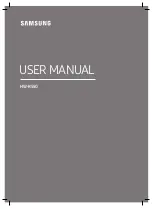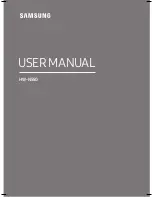
6
BREAK-IN
The CS7.2s, like most speakers, require a period of playing before they perform optimally. The time required
depends on how loudly the speakers are played; more time is required if played softly, less if played loudly. At least
50 hours at moderately loud levels are required before the speaker is performing near optimum. You should notice
even more improvement after 100 hours of playing.
ASSOCIATED EQUIPMENT
The CS7.2s are very high quality sound reproducers and will benefit from use with the finest associated equipment.
Because the speaker presents a lower than average load to the amplifier, an amplifier with high current capability is
recommended. The amplifier should be specified to provide twice the power into a 4 ohm load and at least three
times the power into a 2 ohm load as it provides into an 8 ohm load. Since the CS7.2s are extremely accurate
transducers, they will reveal distortions or non-linearities generated anywhere in the system. Also, the quality of the
interconnect and speaker cables will significantly affect the performance of the system.
POWER REQUIREMENTS
When selecting speakers, the second most commonly asked question by prospective buyers is “how much power do I
need?” This question does not have the simple answer most people expect because it is determined by more than just
the loudspeaker’s efficiency.
The first thing to keep in mind is that sound quality is usually much more important than sound quantity. There
can be large differences in the sonic performance of two amplifiers of equal power, and a smaller powered amplifier
can sound superior to a larger powered amplifier. Almost everyone will be happier with a 50 watt amplifier of high
sonic quality than with a 200 watt amplifier of mediocre sonic quality. For this reason, we feel there is no substitute
for listening to make your amplifier decision.
There are three almost equally important factors that determine how much power is needed for a given situation.
In order of importance they are:
1. The volume level desired
2. The speaker’s efficiency
3. The size of the room. Each of these factors can make a 10-to-1 difference in the power required.
In the real world, if all 3 factors are average, about 50 watts/channel is required. Each factor can raise or lower
this amount by a factor of about 3. Average values for each are:
- a volume level of 88dB SPL
- speaker efficiency of 87dB/W-m
- a room size of 3000 cu ft
The first factor is the most difficult to analyze or objectively determine. There are different ideas about what is
“loud.” Some people do not want to play music above a sound pressure level of 88dB and some do not want to play
music below 88dB. Usually, people who like to listen only at low levels can decrease their power by a factor of 2.
People who like music at very loud levels, even if only occasionally, should increase their power by 2 times or more.
A speaker with a low 84dB/W-m efficiency will require twice the power of an 87dB speaker, and one with a high
rating of 90dB/W-m will require only half the power of an average speaker. Usually, high efficiency can be obtained
only by trading off sonic quality—there are very few speakers that provide a very high level of both. THIEL speakers
are of average efficiency and therefore require an average amount of power.
A small room will need less power for a given loudness level than a large room. A very small room of 1000 cu ft
(11 ft x 11 ft with an 8 ft ceiling) will usually require only half the power of an average room. A large room of
6000 cu ft (20 ft x 30 ft with a 10 ft ceiling) will usually require twice the average power. If the listening room is






























